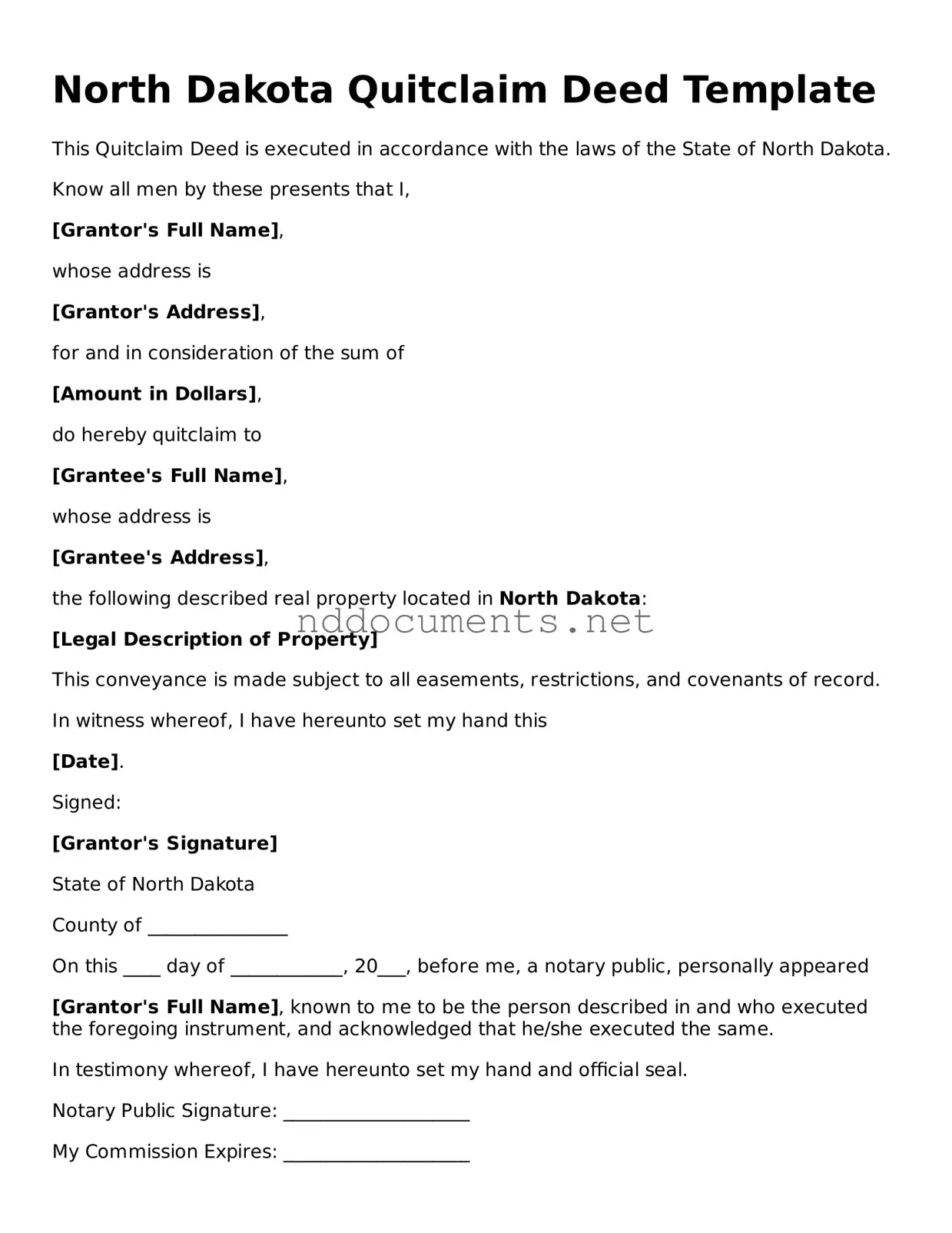In the realm of property transfers, the North Dakota Quitclaim Deed serves as a straightforward yet powerful tool for conveying ownership rights. This legal document enables an individual, known as the grantor, to transfer their interest in a property to another party, referred to as the grantee, without any warranties or guarantees regarding the title's validity. Unlike other deed types, a quitclaim deed does not assure the grantee that the grantor has a clear title to the property; it merely conveys whatever interest the grantor may have, if any. This makes it particularly useful in situations such as transferring property between family members, resolving disputes, or clearing up title issues. The form must be completed with specific details, including the names of the parties involved, a legal description of the property, and the date of transfer. Once signed and notarized, the quitclaim deed must be filed with the appropriate county office to ensure the transfer is legally recognized. Understanding the nuances of this form is essential for anyone considering a property transfer in North Dakota, as it can significantly impact ownership rights and future transactions.
